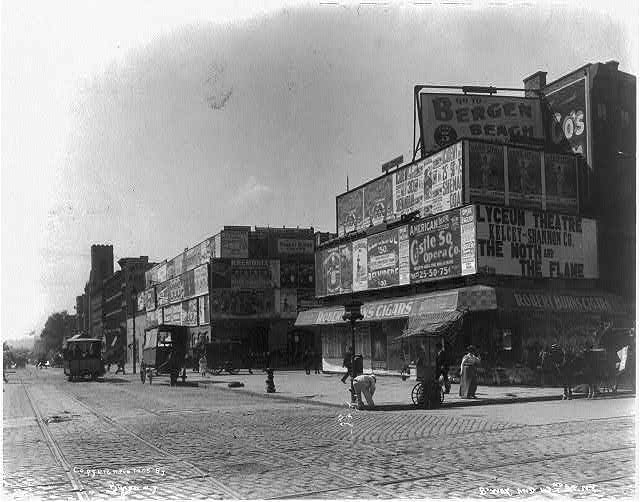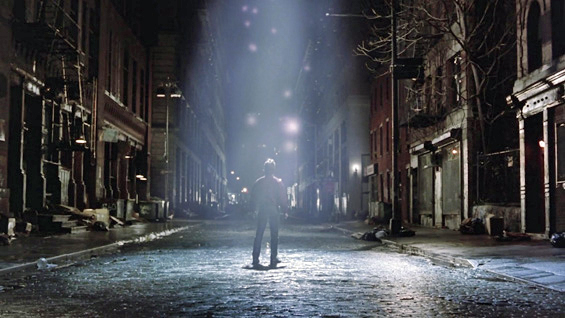Yes, Belgian blocks! Many people incorrectly refer to the paving on the “back alleys” of SoHo Broadway (i.e. Crosby and Mercer Streets) as cobblestones. They are actually called Belgian blocks.
Cobblestones are “untooled” rounded stones, that look like, well, stones—whereas Belgian blocks are tooled pieces of granite shaped like rectangular bricks. New York streets were once paved with rounded cobblestones, but they were replaced by Belgian blocks beginning around 1860. Belgian blocks are much smoother and have a more regular surface than cobblestones, thus they were the preferred pavement type for quite some time. Measuring about 5 inches wide, the blocks were proportioned to the size of a horseshoe (favorable for a time when carriages and streetcars were the most popular modes of transportation).

Times Square was paved with Belgian blocks back in 1905 (Library of Congress)
The Belgian block was used to pave New York City streets well into the twentieth century, but starting as early as 1900, asphalt became widely used to pave over the sometimes uneven and slick granite streets. As a matter of fact, Mercer and Greene Streets were paved with asphalt for years until 1990 when the New York City Department of Transportation excavated them to repair water pipes. Mercer and Greene Streets were then repaved with Belgian blocks as ”an opportunity to retain some of the old elegance of our city,” according to a city commissioner.
Elegant they are, though not easy to drive or bike or even walk on. SoHo’s “cobblestoned” streets are a big selling point for many on SoHo Broadway.
Cadillac features Mercer Street’s Belgian blocks in their advertisements.
“Set on a quaint cobblestone street, the Crosby Street Hotel is as sophisticated as it is stylish.” (from a review on Culture Trip)
“The area is best known for its cast-iron buildings, cobblestone streets, spacious lofts with large windows, and collection of boutique and chain fashion stores.” (from a listing for office space on Square Foot)

Belgian blocks add ambiance to this scene on Crosby Street in the 1990 movie Ghost. (Paramount Pictures)
“Between Broome and Spring on the cobblestones of Crosby Street sits 53 Crosby, a discreet 6-story historic loft building originally built in 1900.” (from a real estate listing for a loft)
“Soho’s beautiful cobblestone streets are always teeming with tourists, shoppers, and photographers taking advantage of the photo-worthy cast-iron architecture.” (from a Street Easy neighborhood guide)
Yukie Ohta is founder of The SoHo Memory Project
Read more from the Look Back at SoHo Broadway Series by Yukie Ohta